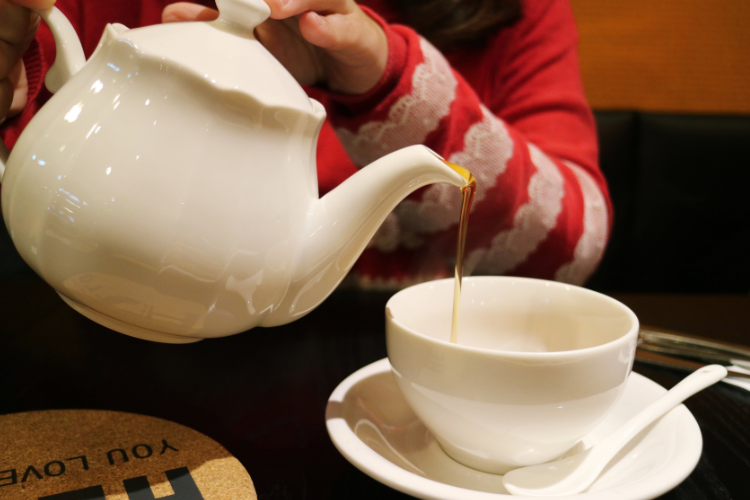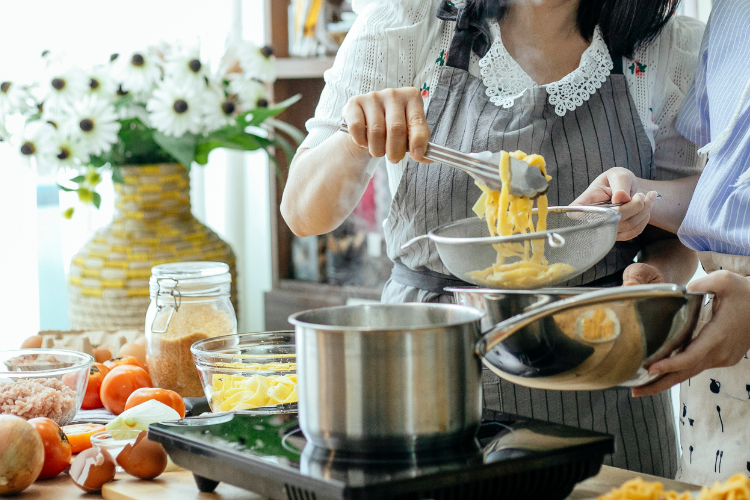Chinese food is famous all around the world for its tasty flavors, many different ingredients, and long-standing cooking customs. Over time, Chinese cooking has changed, adjusting to new preferences and adding modern ideas. In 2023, China Kitchen still pleases food lovers with a nice mix of old recipes and new cooking methods. Let’s look at some cherished traditional Chinese dishes and how they’ve been given a modern twist today.
The Essence of China Kitchen
With its deep roots in the country’s history, culture, and geography. Chinese cuisine exemplifies a harmonious blend of balance and respect for ingredients. Moving from the past to the main ideas of Chinese cooking, we see that balance, harmony, and respect are crucial to its culinary art. This means that traditional Chinese meals have a wonderful mix of textures, colors, and flavors, reflecting the country’s tasty cooking history. Here are some iconic dishes that have stood the test of time and remain favorites in China Kitchen.
Peking Duck – A National Treasure
China Kitchen Peking Duck has become a symbol of Chinese culinary excellence. Additionally, It is seen as a special symbol of the nation.This dish has its origins in Beijing and boasts roasted duck with crispy skin, typically served with thin pancakes, hoisin sauce, cucumbers, and scallions. The art of carving and presenting the Peking Duck is an experience in itself, making it a must-try delicacy in 2023.
Mapo Tofu – China Kitchen
Mapo Tofu is a signature dish from the Sichuan province that is famous for its bold and spicy flavors. This comforting and fiery tofu dish is bathed in a sauce made from fermented black beans, Sichuan peppercorns, and chili bean paste. The combination of soft tofu, minced pork, and the numbing sensation from the peppercorns creates an unforgettable taste at China Kitchen.
Xiaolongbao – Soup Dumplings
Another delightful addition to our list is Xiaolongbao, or soup dumplings, which originate from Shanghai. These delicate dumplings encase a flavorful broth along with minced pork, ginger, and a touch of vinegar, creating a burst of taste with each bite. Transitioning to the art of enjoying Xiaolongbao, the key lies in gently sipping the hot broth before devouring the dumpling.
Hot Pot – An Interactive Feast
Hot Pot is more than just a meal; it’s a social experience that brings friends and family together. Originating from Chongqing, this communal dining affair involves simmering a variety of thinly sliced meats, fresh vegetables, and noodles in a simmering broth. With an array of dipping sauces to customize flavors. China Kitchen Hot Pot has become a cherished tradition across China.
Spring Rolls – China Kitchen
Spring Rolls, which Chinese restaurants worldwide have embraced, have become a beloved appetizer. They fill them with a combination of vegetables, shrimp, or minced pork. They deep-fry them to golden perfection, offering a delightful balance of textures and flavors. Moreover,People who love food really enjoy Spring Rolls. They find them impossible to stop when they have a sweet and sour dipping sauce.
China Kitchen – Kung Pao Chicken
We begin our journey with one of China Kitchen most beloved dishes – Kung Pao Chicken. Originating from the Sichuan province, this fiery stir-fry combines tender chunks of chicken, crunchy peanuts. A medley of vegetables in a tantalizing sauce made with Sichuan peppercorns and dried chili peppers. Moreover, contrasting textures and bold flavors make this dish an absolute delight to savor.

Gong Bao Shrimp
Gong Bao Shrimp is a seafood variation of the classic Kung Pao Chicken. Hailing from the coastal regions of China. This China Kitchen dish features succulent shrimp, roasted peanuts, and crisp vegetables in a mouthwatering sauce that balances sweetness and spiciness. Moreover, Its delightful taste and vibrant colors make it a popular choice for seafood enthusiasts in 2023.
Yangzhou Fried Rice and Ma Po Eggplant
Rice is an essential staple in Chinese cuisine, and Yangzhou Fried Rice stands out as one of the most famous renditions. This fragrant dish combines fluffy rice with a medley of vegetables, eggs, and your choice of meat, seasoned with soy sauce and other spices. The result is a satisfying and flavorful meal that is both simple and comforting. This flavorful China Kitchen dish features tender eggplant cooked in a spicy bean-based sauce, often paired with minced garlic and ginger. The tasty sauce covers the eggplant, making a meal that feels filling and enjoyable.
Must Read Number 1 Kitchen
China Kitchen Modern Twists on Traditional Favorites
As food changes, China Kitchen also changes. New and exciting versions of traditional Chinese dishes have amazed food fans and cooking experts. Chefs are using creative methods, ingredients from around the world, and beautiful ways of serving food to make fresh dining adventures. Here are some examples of these modern twists on classic Chinese recipes:
Fusion Cuisine: East Meets West
In the spirit of culinary adventure, fusion cuisine has found its way into China Kitchen. Chefs are blending Chinese flavors and cooking techniques with ingredients and influences from other cuisines, creating exciting and unexpected taste combinations. Dishes like Chinese-inspired pizzas, sushi rolls with Chinese fillings, and Sichuan-spiced tacos are just a few examples of how the boundaries of Chinese cuisine are being pushed in 2023.
Preserving Culinary Heritage
Nowadays, new changes are getting popular, but people are also trying hard to keep China’s old cooking alive. All around the country, they’re working to write down the old recipes, cooking ways, and stories of ancient dishes. Lots of young chefs are going back to their origins, finding ideas in their family’s cooking customs, and adding them to their modern dishes.
Elevated Traditional Ingredients
Modern Chinese chefs have embraced the farm-to-table movement, showcasing locally-sourced, sustainable ingredients in their dishes. By elevating traditional components like soy sauce, tofu, and bok choy, they breathe new life into age-old recipes. Chefs are experimenting with various cooking techniques and flavor profiles to create dishes. That are both respectful of tradition and relevant to the Modern cooking world today.
Fusion of Cooking Techniques
Innovation in Chinese cuisine isn’t just about blending flavors; it’s also about combining different cooking techniques. For instance, sous-vide cooking, a method where ingredients are vacuum-sealed. Which cooked in a water bath at a precise temperature, has found its way into China Kitchen. Chefs are using this technique to cook meats to perfection. Moreover, that resulting in tender and flavorful dishes that retain their natural juices.
Playful Present ation
Chinese culinary artistry does not only confine itself to the flavors but also extends to the presentation.Modern China Kitchen often adopts a playful approach to serving their dishes. They shape Bao buns like cute animals and arrange steamed dumplings to resemble a blooming flower. Additionally, chefs make dining experiences more enjoyable and Instagram-worthy by creating vibrant-colored dishes, among other examples.
Healthy Choices – China Kitchen
With growing health consciousness among diners, modern China Kitchens are increasingly focusing on offering healthier and more menu options. For example, the use of MSG has gone down, and healthier oils are now used instead of the old ones. Additionally, People are making plant-based versions of favorite foods more often. Also, they are trying to attract vegetarians and vegans while helping the environment in the cooking industry.
The Origins of Chinese Tea – China Kitchen
The origins of tea can be traced back to ancient China, where it was initially consumed for its medicinal properties. According to legend, Emperor Shen Nong discovered the properties of tea when tea leaves accidentally fell into his boiling water. Over time, tea cultivation spread across different regions of China. Moreover, its leading to the development of various tea varieties, each with its unique flavors.
The Six Categories of Chinese Tea
- Green Tea: Green tea is famous for its fresh and grassy flavor.
- Black Tea: Also known as red tea in China, black tea is fully oxidized, resulting in a reddish-brown color.
- Oolong Tea: Oolong tea falls between green and black tea in terms of oxidation.
- White Tea: Light flavors, white tea allowing the leaves to retain their natural appearance.
- Yellow Tea: A rare category, yellow tea is processed similarly to green tea. which imparts a unique taste.
- Dark (Pu-erh) Tea: Dark tea develops complex and earthy flavors as it ages over time.
The Elegance of Chinese Tea Ceremonies
In China, tea ceremonies are more than just a way to brew and serve tea; they respect, and cultural identity. The Gongfu Cha, a traditional tea ceremony, involves individuals paying attention to every detail. Furthermore, they carefully select tea leaves and control water temperature to pour tea. This art form has passed down through generations, preserving the essence of Chinese tea culture in the 21st century.
Modern Tea Culture in China Kitchen
Tea is still very important in China, even though the country is becoming more modern quickly.In busy cities, tea houses are peaceful places where people can relax. Additionally, have meaningful talks, and try various types of teas. Younger generations also embrace the tea tradition, seeking to explore the flavors and health benefits associated with different tea varieties.

In 2023, China Kitchen remains a culinary haven, blending traditional Chinese recipes with modern twists. From memorable dishes like Kung Pao Chicken and Peking Duck to innovative fusion creations. Additionally, it promises a delightful dining experience for all who seek the magic of Chinese cuisine.


